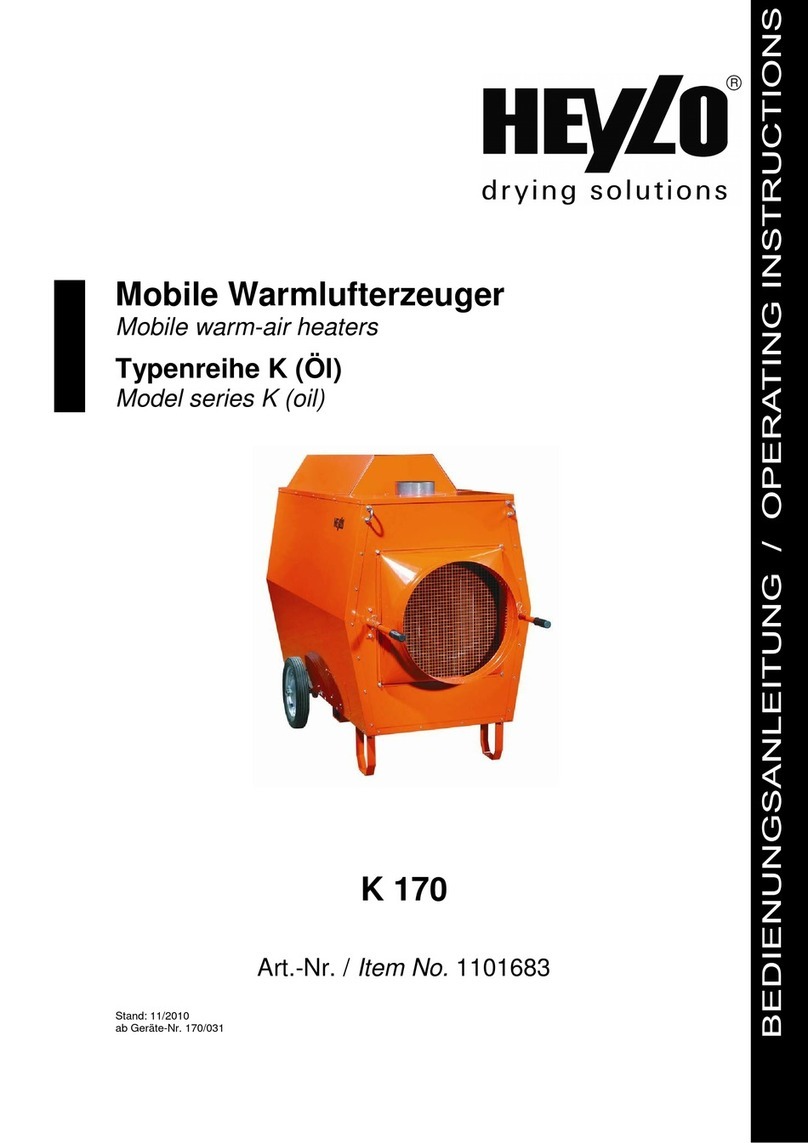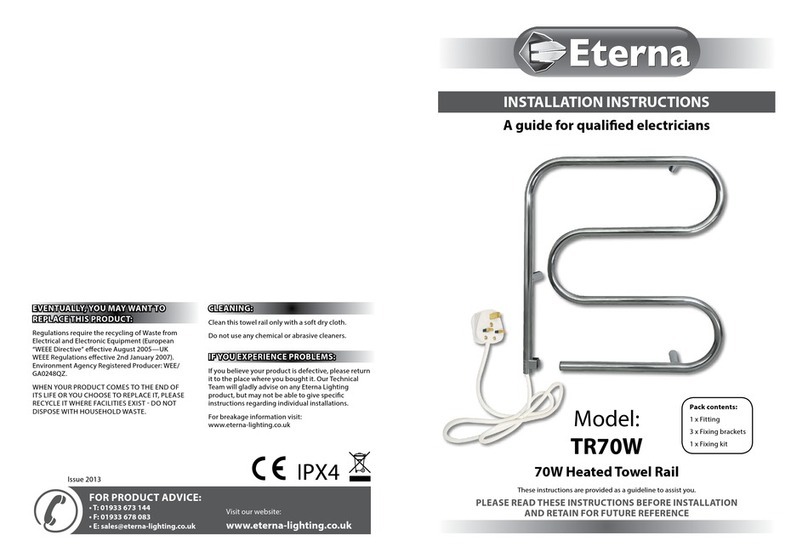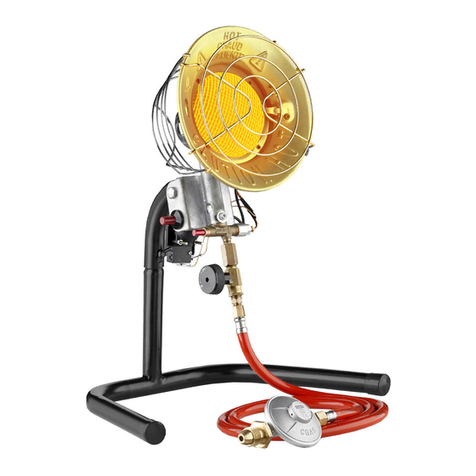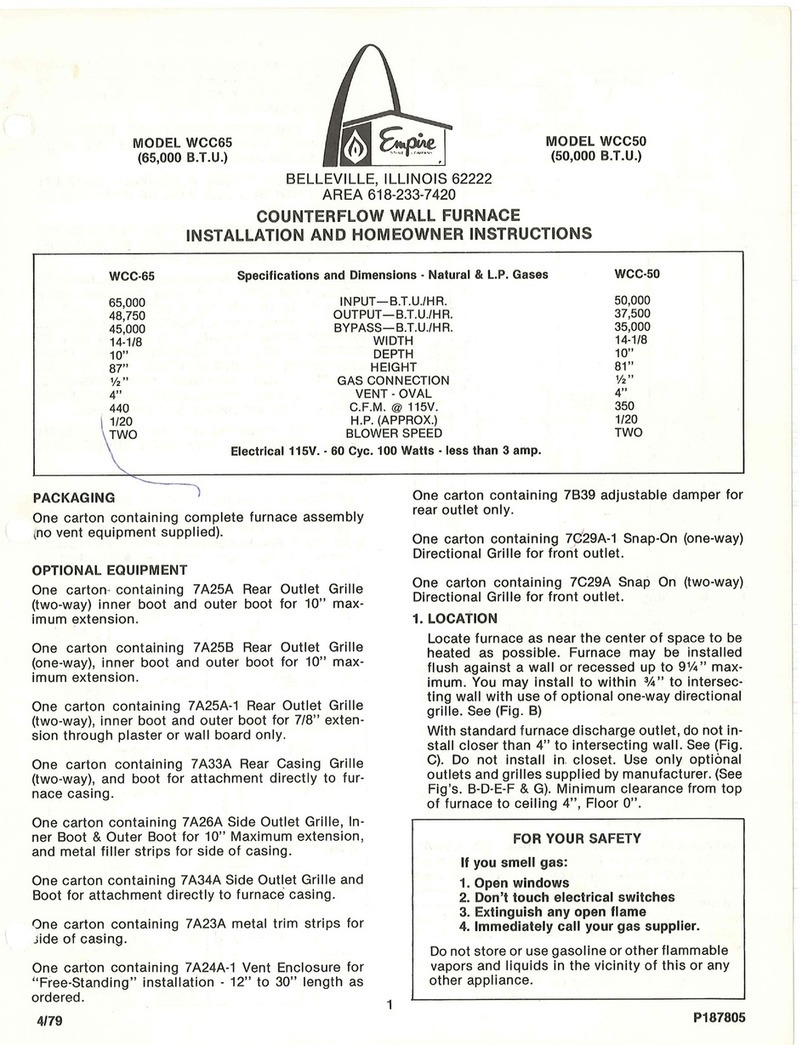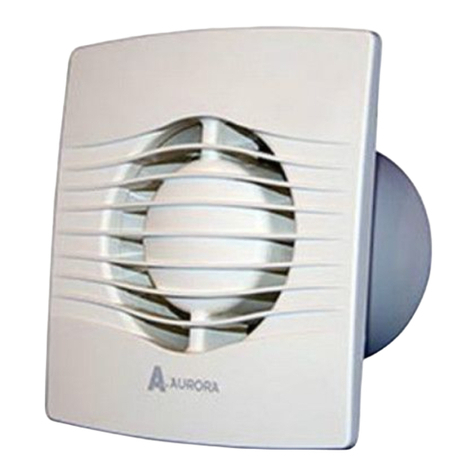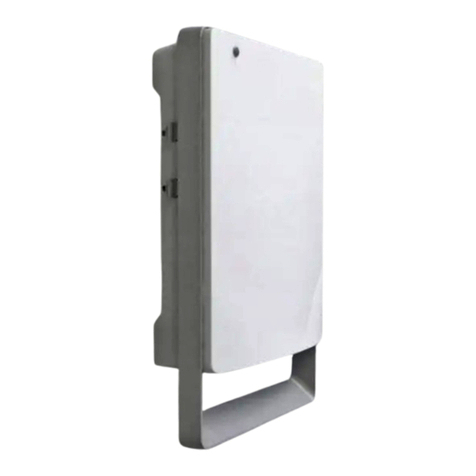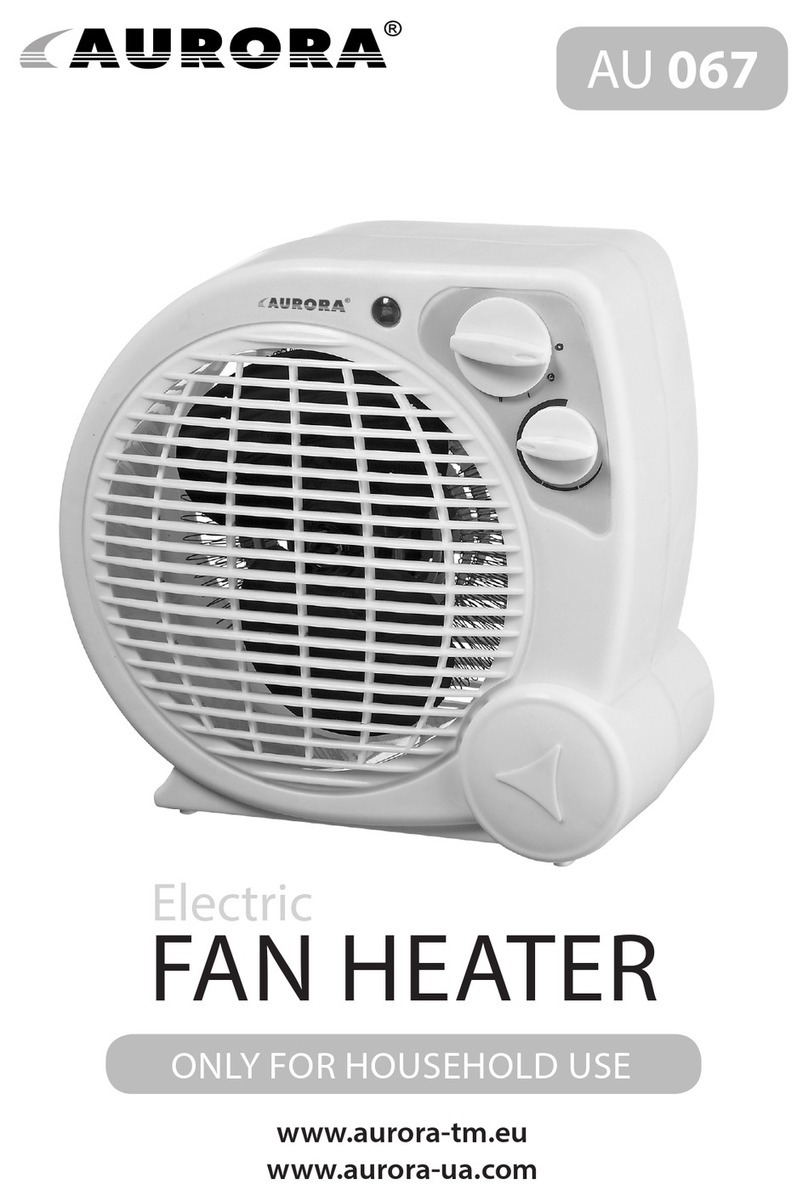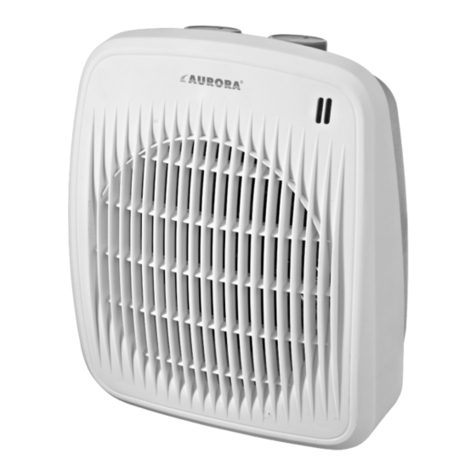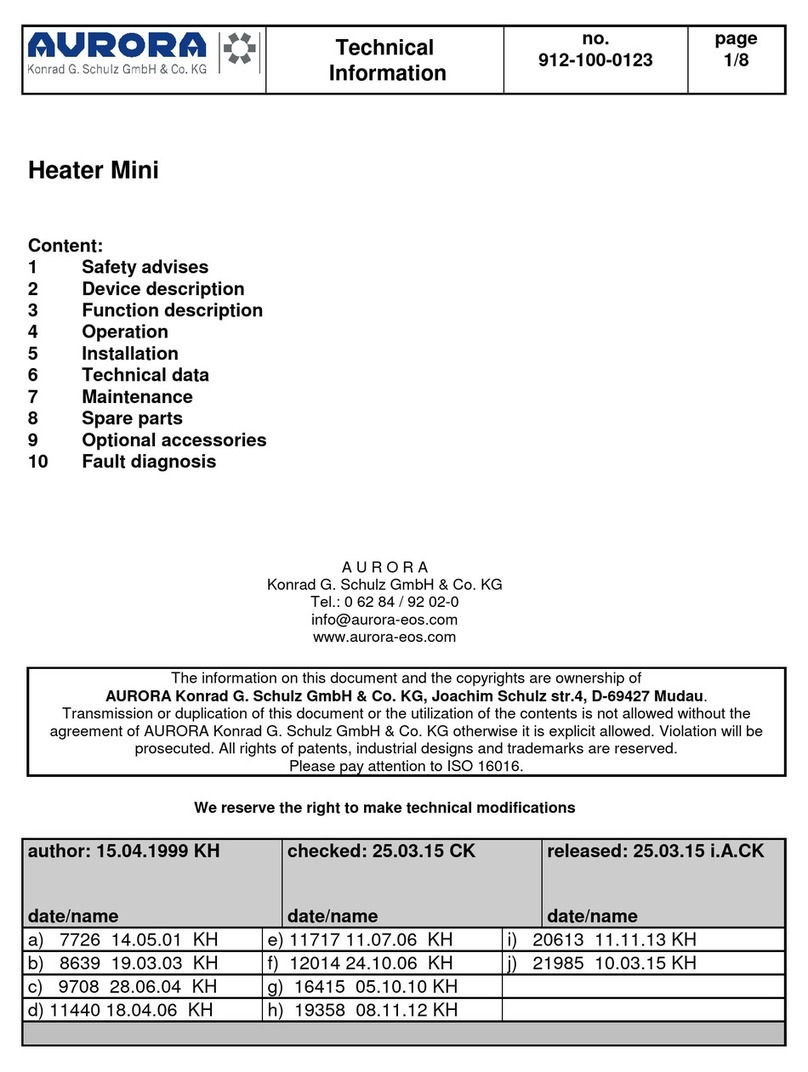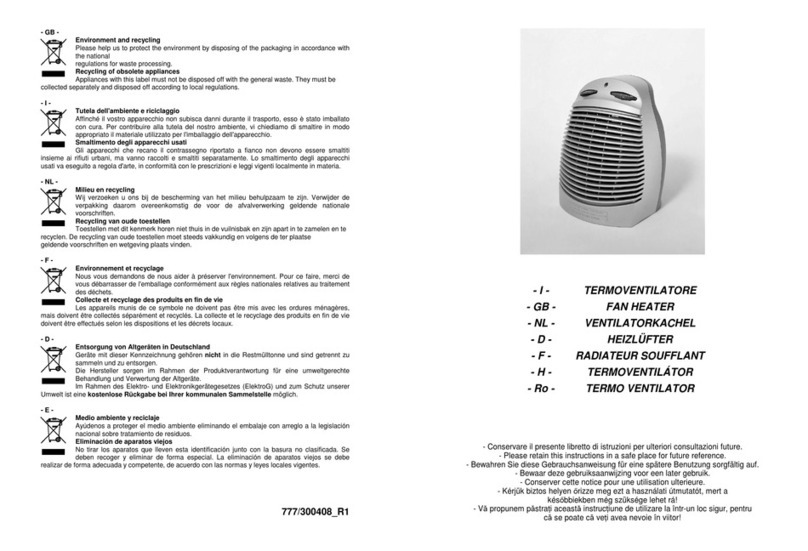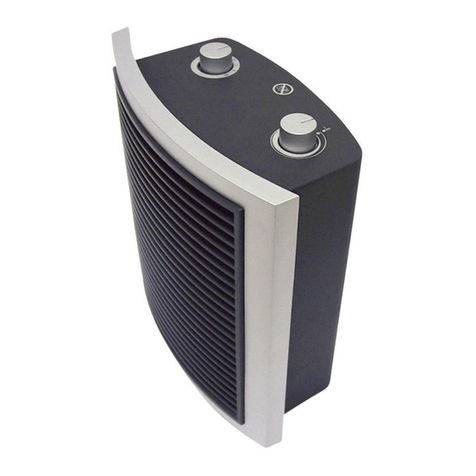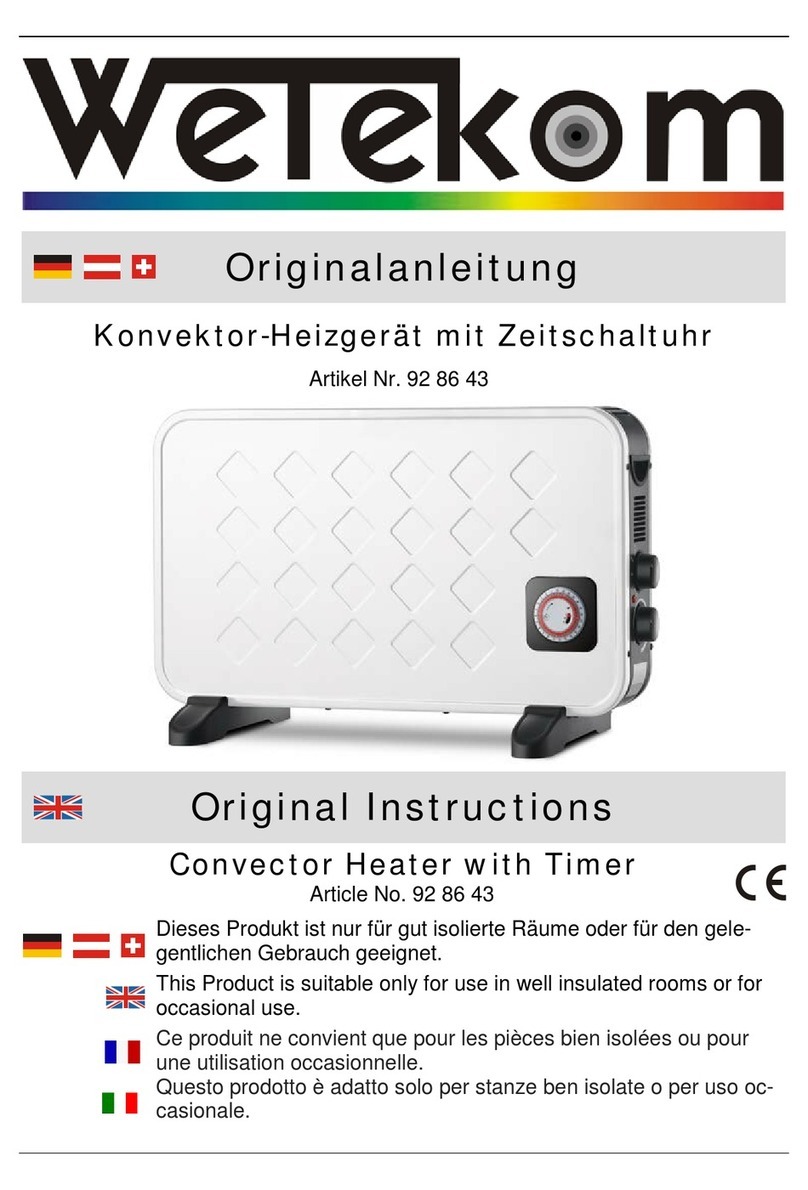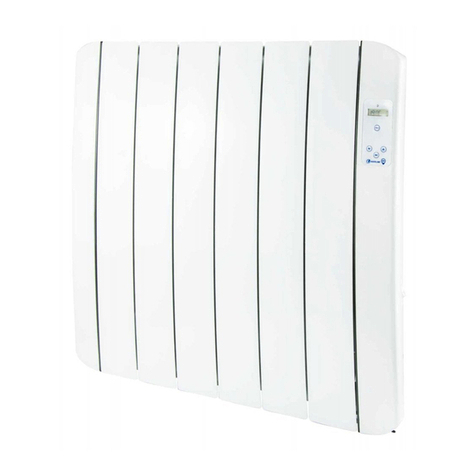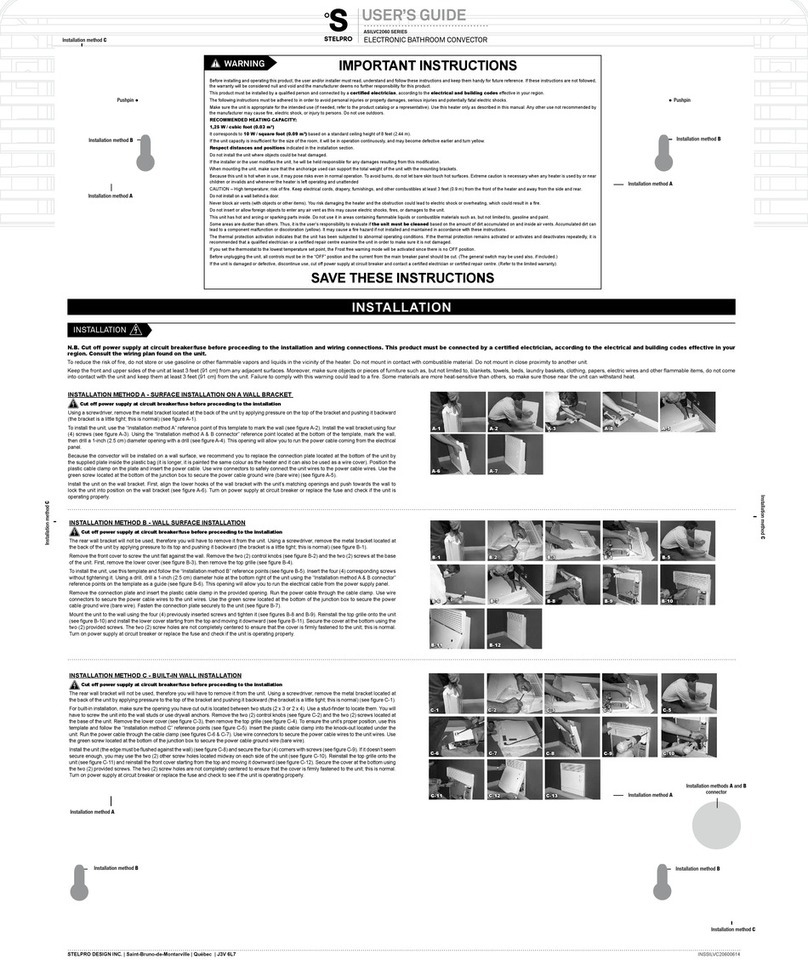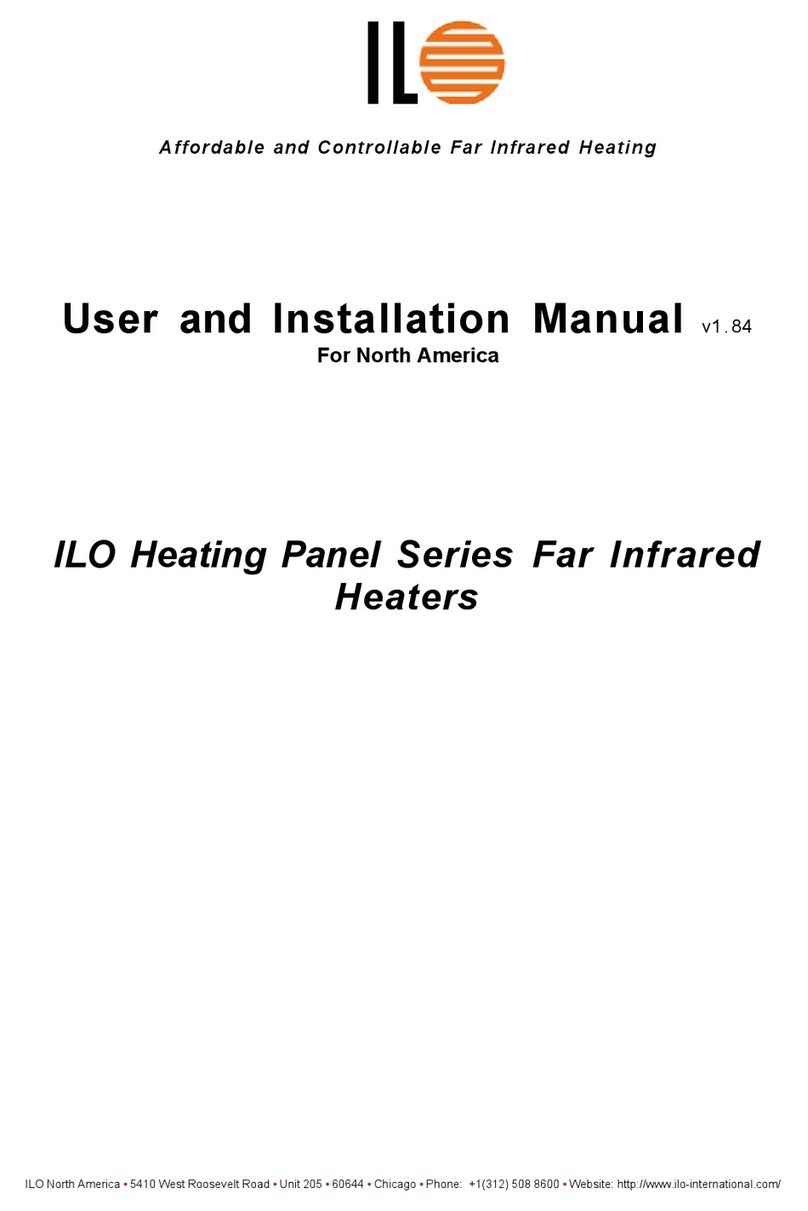
4
IG1554EW 07/12
INSTRUCTION GUIDE: AUXILIARY HEATER INSTALLATION
Installation Steps cont.
• IfunithastheAuroraAdvancedControloption,proceedtotheEnergyMonitoringConnectionstable,forinstructionson
connecting the auxiliary heat kit to the auxiliary heat current transducer.
• Proceedtostep15.
13B) EAM5, EAM8, EAM10, EAL10, EAL15, and EAL20 with PSC Motor Only:
• ForPSCmotors,removethesafetyplugfromtheorangeandbrownblowerpowerwires5-pinconnector,(leavewhite
and black wires connected to PSC motor) then plug the orange and brown blower power wire 5-pin connector into the
receptacle from the auxiliary heat control panel. The green ground wire on this connector is no longer used and should
be clipped or tied to prevent interfering with other components.
• Theotherendoftheorangeandbrownblowerpowerwire5-pinconnectorshouldbeconnectedtothepowerstrip
(PS) located inside the unit’s control box (Figure 6) as shown in the unit schematic. On some models these wires are
connected at the factory.
• Insertthesafetyplugintotheblueandpurplewire5-pinconnectorhangingfromtheauxiliaryheatcontrolpanelsince
this connector will not be used.
• Tieoffallwiressothattheydonotinterferewithanyothercomponents.
• IfunithastheAuroraAdvancedControloption,proceedtotheEnergyMonitoringConnectionstable,forinstructionson
connecting the auxiliary heat kit to the auxiliary heat current transducer.
• Proceedtostep15.
14A) EA*H and EAS4 Heater Kits with 5-Speed ECM Motor Only:
• For 5-speed ECM motors connect the orange and brown blower power wires to the power strip (PS) located inside the
unit’s control box as shown in the unit’s schematic.
• Removesafetyplugfromexistingblowerpower5-pinconnector,thenplugtheblowerpower5-pinconnectorinto
receptacle P9 on the auxiliary heat control box. The green ground wire on this connector is no longer used and should
be clipped or tied to prevent interfering with other components.
• Insertthesafetyplugintotheblueandpurplewire5-pinconnectorhangingfromtheauxiliaryheatcontrolpanelsince
this connector will not be used.
• Tieoffanywirethatinterfereswithbloweroperation.
• IfunithastheAuroraAdvancedControloption,proceedtotheEnergyMonitoringConnectionstable,forinstructionson
connecting the auxiliary heat kit to the auxiliary heat current transducer.
• Proceedtostep15.
14B) EAM5, EAM8, EAM10, EAL10, EAL15, and EAL20 with 5-speed ECM Motor Only:
• For 5-speed ECM motors connect the orange and brown blower power wires supplied with the unit to the power strip
(PS) located inside the unit’s control panel as shown in the unit’s schematic.
• Removesafetyplugfromexistingblowerpower5-pinconnector,thenplugtheblowerpower5-pinconnectorinto
receptacle from the auxiliary heat control panel with the brown, orange, and green wires. The green ground wire on this
connector is no longer used and should be clipped or tied to prevent interfering with other components.
• Insertsafetyplugintothe5-pinconnector(blue,purple,andgreenwires)hangingfromtheauxiliaryheatcontrolpanel.
• Tieoffanywirethatinterfereswithbloweroperation.
• IfunithastheAuroraAdvancedControloption,proceedtotheEnergyMonitoringConnectionstable,forinstructionson
connecting the auxiliary heat kit to the auxiliary heat current transducer.
• Proceedtostep15.
IMPORTANT: Remove the black/white and gray/white jumper wires routed from the contactor (CC) to the power
strip (PS) in the main control box.
15) Check to ensure that the blower high speed setting is above the minimum CFM required for the heater (see Table 8). Wire
tie all leads away from blower inlet and rough edges. On vertical bottom discharge units, make sure wires are equipped with
a drip loop to prevent condensation from running down to motor or element connectors.
16) Units with the three operating modes of forced air heating/cooling/hydronic heating with 15 and 20 kW electric heat option,
line jumpers need to be placed on the auxiliary heat board terminal block P1 from 1 to 3 and 2 to 4. This is necessary since
this product line only allows two stages of electric heat. The first stage will have 10 kW of electric heat, and with second
stage will produce a total of either 15 or 20 kW of electric heat depending on which model of electric heat is installed. Other
product lines have no staging at all and others allow up to four stages of electric heat at 5 kW intervals and line jumpers are
not necessary.
17) Connect power to the auxiliary heat control box (one or two circuits as per Table 9). When single source power is required,
jumper bar assembly (part number 19P592-01) should be used on electric heat kits supplied with breakers.








